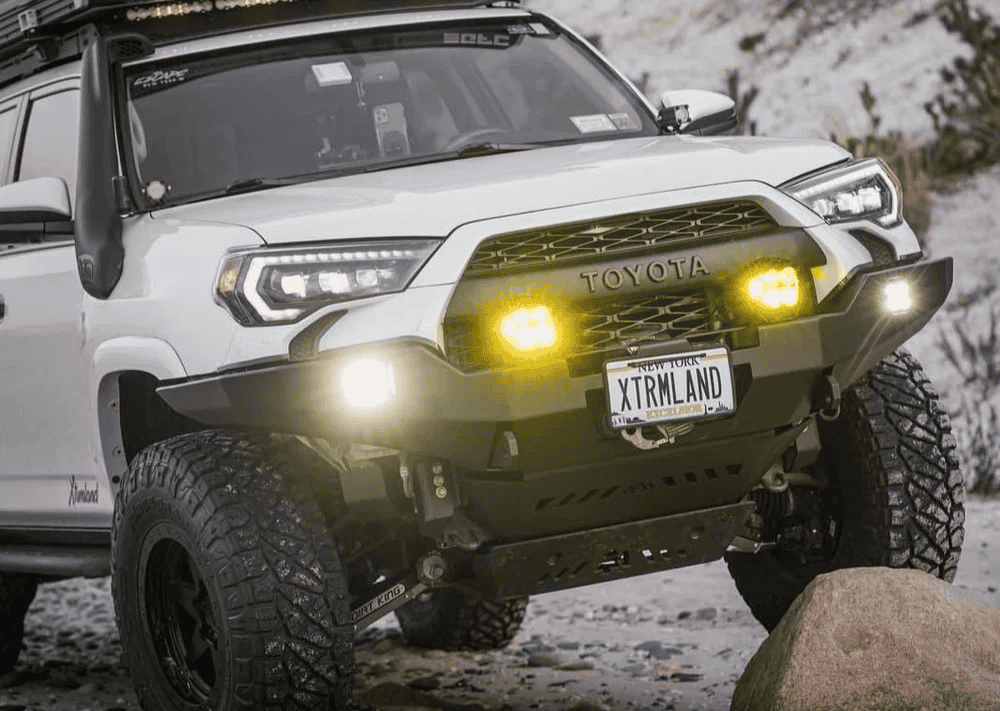Overland Vehicles

A portable shower and water tank setup starts with honest math. Daily use adds up fast when you include rinsing, cooking, dishes, and drinking. Many travelers plan two to four gallons per person per day, with short camp showers falling around one to two gallons if you use a low flow head and turn off the stream while soaping. If you like longer rinses, expect three to five gallons per session and size the tank accordingly.
Pressure and flow shape the experience as much as capacity. Most compact shower heads feel comfortable at one to one and a half gallons per minute and around forty to sixty pounds per square inch. That range helps you rinse clean without draining the tank too quickly. Sketch how often you will fill, where you will refill, whether you want hot water every time, and how you will handle gray water in locations that require capture.
For vans, a ten to thirty gallon freshwater tank covers long weekends to multi week loops, while smaller rigs might rely on a five to ten gallon portable container. A compact accumulator tank smooths pulsing from the pump and reduces cycling. If you plan daily showers, a bigger tank or frequent top offs at campgrounds and fuel stations will keep you from rationing. Target a shower head that keeps flow near one gallon per minute for efficient use.
A dependable system includes a freshwater tank, a 12 volt diaphragm pump, an accumulator, an inline sediment filter, and a safe drain path. Add a carbon taste filter on the cold side if you plan to drink from the main tank. For hot water, common choices are an engine heat exchanger for fast warmups while driving, a portable propane water heater for stationary use, or a simple solar shower bag for sunny days.
Plumbing can be PEX or reinforced flexible hose. PEX with push fit or compression fittings is tidy, durable, and easy to service. Flexible hose shines where vibration and movement exist, such as a quick connect shower line routed to a hatch or rear door. Use food grade hose and avoid materials that add taste. Place a check valve to prevent backflow, and include a vented fill neck so the tank can breathe during fills and drains.
Mount the pump below the tank outlet to help it self prime and reduce cavitation. Add a coarse prefilter before the pump to protect the diaphragm from grit. Anchor the tank with metal straps and rubber isolators to manage movement and noise. Quick connect shower fittings make setup fast and let you use the same port for a washdown hose. Wire the pump through a fused circuit sized to the current draw and keep cable runs short to limit voltage drop.
A clean install is about more than tidy lines. Keep the center of gravity low by placing the tank on the floor near the axle. Use a drain valve at the lowest point so you can empty fully before storage or servicing. If you camp in cold conditions, insulate the tank and lines, add a bypass for the heater, and consider a safe interior route for the shower hose so you can rinse inside a privacy enclosure when wind or frost makes outside use tough.
Sanitation matters. Disinfect the tank at intervals with a mild bleach solution approved for potable systems, then flush until the scent is gone. Replace filters on schedule and keep a spare shower head screen. Use biodegradable soap and follow Leave No Trace ethics. Where a gray tank is required, plumb a separate container with a trap, vent, and an easy drain. If ground infiltration is allowed, disperse water at least two hundred feet from streams and lakes and avoid sensitive vegetation.
Winterization keeps gear safe. Drain tanks and lines completely, blow out with low pressure air if possible, and open faucets to relieve pressure. If you use antifreeze rated for potable systems, follow the label and flush thoroughly before the next trip. Descale the water heater as needed, check clamps for tightness after rough roads, and inspect hoses for abrasion at each service interval.
Portable shower and water tank setup in a custom adventure van, showing tank, pump, filtration, and quick connect shower for off grid travel.
A thoughtful design turns a rinse into a comfort you will actually use. The right mix of capacity, efficient fixtures, smart plumbing, and simple maintenance keeps water reliable trip after trip.
When you are ready to turn planning into a clean, compact reality, OZK Customs builds integrated water systems that match your rig and routine. From heated showers and filtered drinking water to quick connect washdown ports, our team packages components so they fit, function, and stay quiet on rough roads. Explore our Overland rigs to see how a complete travel system comes together, then look at our Custom overland upfit options to tailor storage, enclosures, and plumbing access to your use case. Curious about our process and results others have experienced? Visit Why choose OZK Customs for our approach and client stories.
Your next shower should feel simple, not improvised. Share how you travel, how many people you support, and what comfort means to you, and we will design and build the portable shower and water tank setup that fits your adventures.
Ready for a clean, turnkey water system? Tell us about your travel style and crew. Our team will design and build a portable shower and water tank setup that fits your rig and timeline. Share a few details and we will map your build path today.
ADDRESS:
6159 E Huntsville Rd, Fayetteville, AR 72701
PHONE:
(479) 326-9200
EMAIL:
info@ozkvans.com